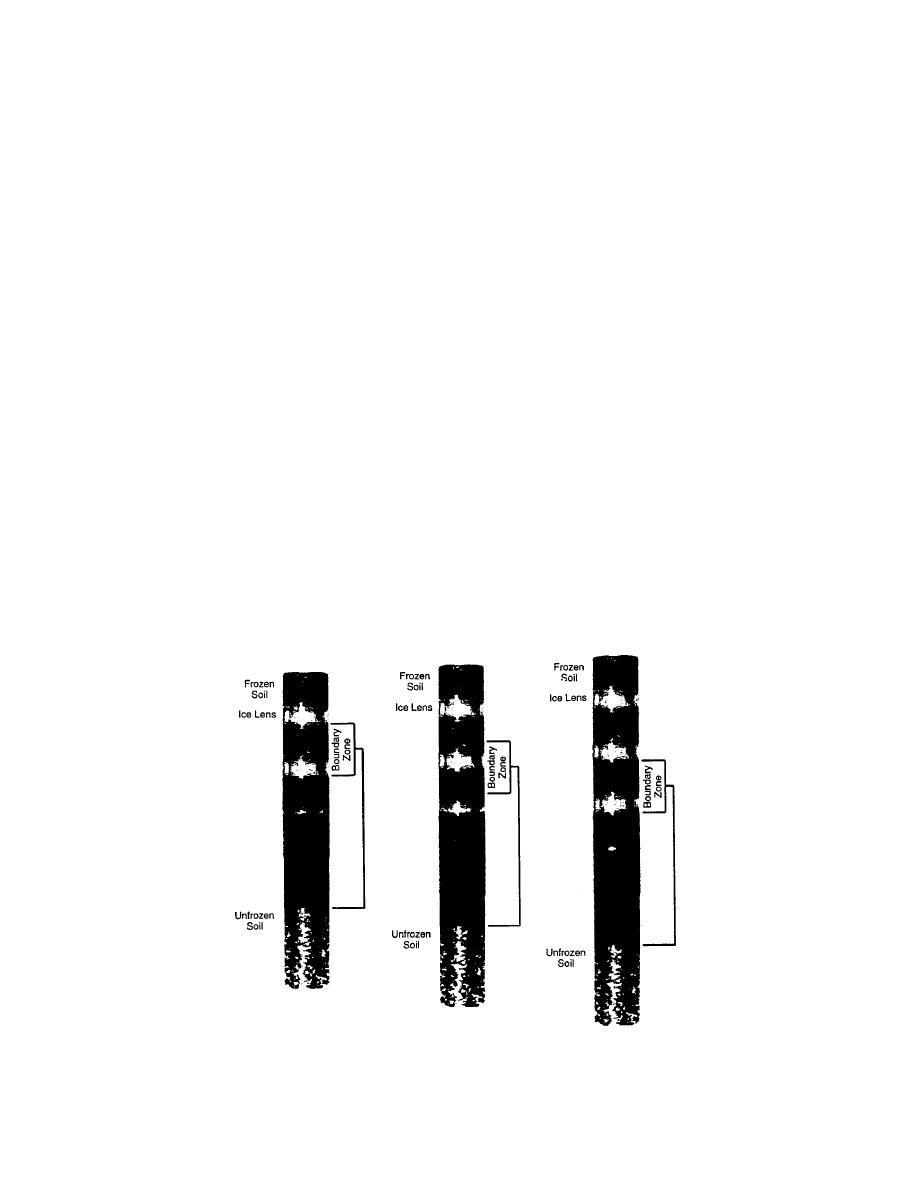
(qh )f = (qh )b + h [ (Wsat - Wf ) vb + (qw )b ].
zone. The freezing front is the plane that separates
(2)
soil containing ice from the unfrozen soil. The
upper boundary zone is not defined by a plane,
In its purest sense, this results in six unknowns
but is rather a zone that always contains a thick-
and two equations. In practice, though, several of
ness of pure ice equal to a mature ice lens and a
the variables are known from other relationships
thickness of frozen soil equal to the thickness of
or observations. The numerical trick is to specify
the mature interspace frozen soil. Figure 1 also
at least three of the variables and guess another to
shows the location of these regions at various
start the numerical solution process.
stages throughout the lensing cycle.
Temperature profiles during heaving are the
Under steady-state conditions, the inputs across
most common piece of experimental information
the freezing front are given by
collected because it is easy to measure. Freezing
front penetration rate is readily determined from
grains
Gvb
these data, so vb is one logical variable to specify.
water
Wsatvb + (qw)b
Heat fluxes are also readily determined from tem-
ice
0
perature profile data if the thermal conductivities
sensible heat
(qh)b
are known. The thermal conductivity of the un-
latent heat
h [Wsatvb + (qw)h]
frozen soil is a constant in this one-dimensional
case because of the air-free restriction. The sen-
and the outputs across the boundary zone are
sible heat flux across the frozen fringe (qh)b there-
fore makes another reasonable choice. Unfortu-
grains
Gvb
nately, there is no a priori justification for choos-
water
Wdvb
ing from the remaining variables. The thermal con-
ice
Ifvb + vi
ductivity in the frozen soil could be computed if
sensible heat
(qh)f
the lens thickness and spacing and the residual
latent heat
h [Wfvh] .
unfrozen water content Wf were known. The flux
The global mass balance is therefore
of water into the fringe could also be computed if
the amount of heave were known. For lack of any
(qw )b = Yvi + [ (Y - 1) (Wsat - Wf ) ] vb
(1)
If the residual unfrozen water Wf in the frozen
and heat balance is
soil between ice lenses is known, then the remain-
Figure 1. Lensing cycle.
2



 Previous Page
Previous Page
